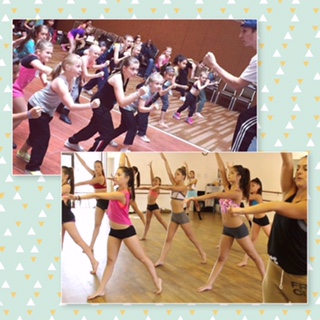
When it comes to choreography, every dancer memorizes at a different rate. And if you’ve been dancing for a while, chances are that you are already incorporating many of these techniques to commit your moves to memory. Here are 7 tips to help you get that choreography down:
Start Small
When you’re trying to commit moves to memory, it is helpful to start with short sections. This prevents dancers from getting overwhelmed, and allows him or her to achieve success over one portion before moving to the next. Just as it is easier to remember phone numbers as groupings of numbers instead of seven individual numbers, it is easier to remember choreography in short sequences. This is taking advantage of the way the brain works!
Create Mental Cues
The next step is to give word cues to help remember transitions or challenging parts. For example, if your dancer is trying to remember whether go to the right during one transition, help them remember the symbol of an R by saying five words that start with an R. Another helpful cue is having the dancer listen to the words of the song for a word that gives them a cue to what they should be doing.
Repeat the Words
Not only is it helpful to practice the moves, it is sometimes helpful to practice the words. If your dancer is in tap, having him or her repeat the words, “shuffle ball change, bounce, bounce, heel, toe” while their body moves will help reinforce memorization. Even saying the words while doing other activities, such as walking home from school, can help commit them to memory as a kind of mental practice as well.
Practice Time
Practice is of course critical to memorization. And the amount of practice depends on the dancer. Some dancers benefit from practicing every day for 30 minutes, others will progress practicing a few times a week. You can determine what your dancer needs. Also make sure to take breaks when practicing. Repetition combined with breaks has been shown to help with memorization.
Set the Scene
Practicing should always be a fun option and not a chore, so if your dancer is getting frustrated you may need to make some adjustments. Practice charts with stickers and small rewards are a great way to help your dancer with instant gratification, so they don’t have to wait until the next class to see their growth. The practice environment is very important as well! Practice in a clean space, free from distractions like toys, TV or siblings.
Use Video
Start with the practice videos that the teacher provides, and then create some videos of your own. Take a short video of your dancer practicing so that he or she can see for themselves where the moves need to be sharper. Then video the results so they can see the difference. This is a great tool in working on choreography.
